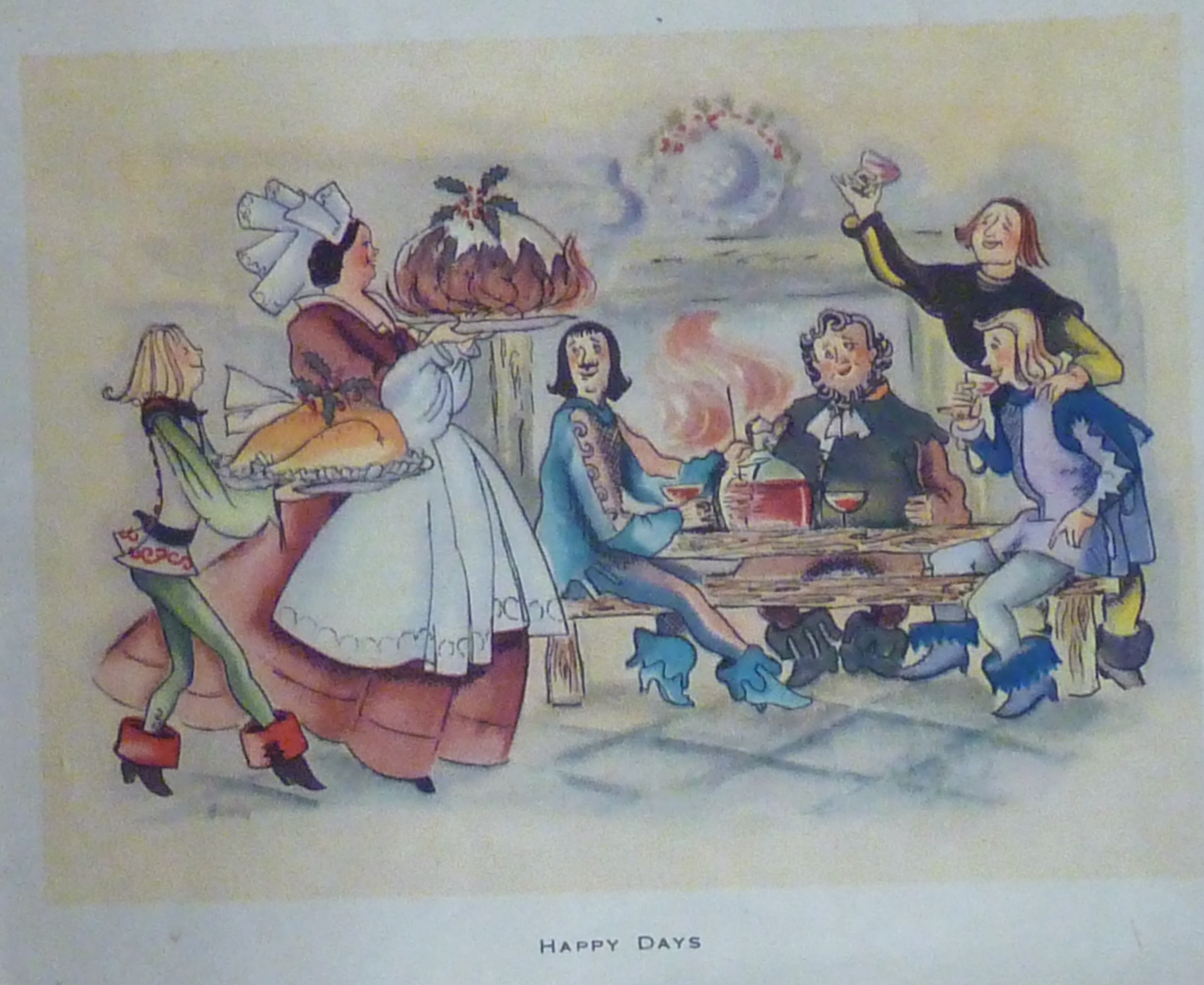
Raphael Tuck & Sons Ltd
Unlike today, the earliest references to Christmas in the Gazette of 1923 didn’t appear until well in to November. One of the first to appear was a description of the annual ‘package of Christmas and New Year cards, stationery, post cards, calendars and books from the collection of Messrs Raphael Tuck and Sons Ltd’. The firm also designed the cards for the Royal family and in 1923, the King’s card had a particular West Country significance. It depicted ‘William, Prince of Orange, landing at Torbay, 1688, painted by Howard Davie’.
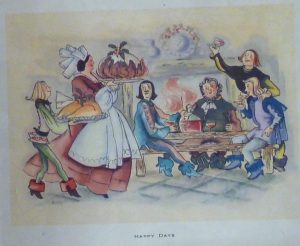
Happy Days
In 1866, Raphael Tuck opened a small shop in London selling prints and picture frames. With the help of his sons and grandsons, they would become one of the most important printing and publishing firms. In 1871 they produced their first Christmas card. The family, originally from Prussia, had some innovative marketing strategies and a highly successful competition for the design of a Christmas card helped launch the ‘industry’ we know today.. They were at the forefront of postcard production during the boom years of the early 20th century, again employing competitions to boost sales and raise money for charitable institutions. During the London blitz of 1940, their now impressive headquarters, were completely destroyed with the loss of 74 years of archive and over 40,000 original paintings, drawings and photographs. However, the firm continued, in family hands, until 1955 when it merged with two other companies.
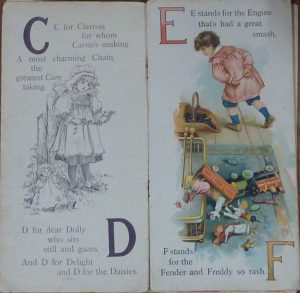
The page of an alphabet book
The three items from our archive collection illustrate a card, a book and a calendar as described in the 1923 Gazette. All of these date from earlier years but show the wide range of items produced by the company. The calendar is particularly delicate as the cups are hinged to the teapot so that the months can be changed.
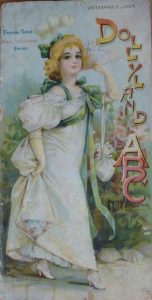
A card for ‘Dollyland’
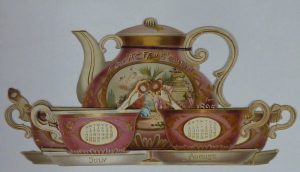
The ‘At Home’ Calendar for 1895
Written by Museum Volunteer, Sue B

